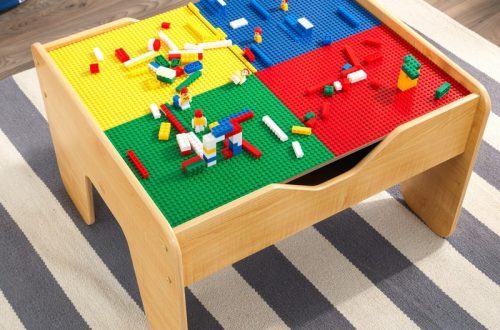Introduction
The Rubik’s Cube final layer serves as the ultimate challenge for anyone determined to complete this iconic puzzle. While many solvers master the first two layers, the last layer often poses a significant hurdle. This stage can be frustrating. However, understanding the techniques and algorithms specific to the final layer can unlock the secrets to a swift and effective solution.
In this extensive guide, we will walk you through the importance of the final layer, providing a step-by-step breakdown of how to solve it. You will learn essential algorithms used specifically for the last layer, uncover common pitfalls, and receive tips to avoid them. By the end of this article, whether you’re a beginner or an advanced cuber, you will feel empowered to tackle the final layer with confidence.
Understanding the Final Layer
Before diving into solving the final layer, it’s vital to understand what constitutes this stage. The final layer includes the top face and the pieces belonging to this section, which encompass both corners and edges. Each Rubik’s Cube has six faces, and typically, the final layer is the one facing upward once you’ve completed the first two layers.
Importance of the Final Layer
The final layer is not just important for completing the puzzle but represents a significant milestone in your cubing journey. Mastering this layer enhances your overall understanding of the cube’s mechanics, serving as a foundation for advanced techniques and competitive solving methods.
Understanding the various conditions you may encounter in the final layer will help you execute the right algorithms effectively. This knowledge will also lead to improved solving times, which many cubers strive to achieve.

Step-by-Step Process for Solving the Final Layer
The process for solving the Rubik’s Cube final layer can be broken down into three main steps: positioning the last layer edges, orienting the last layer corners, and final positioning of corners. Each step requires careful execution to avoid disturbing pieces that have already been placed correctly.
1. Positioning the Last Layer Edges
To start, you want to ensure that the last layer edges are in the correct positions. This step involves getting the edge pieces into their right spots. Begin by checking the orientation of the edges to ensure they match the colors of the adjacent center pieces.
Algorithm for Positioning Edges
To assist in positioning the last layer edges, you can use a specific algorithm:
– Algorithm: R U R’ U R U2 R’
Utilize this algorithm when you find that edges are in the wrong place but need to leave the corners untouched. Repeat this algorithm until the edges are correctly positioned.
2. Orienting the Last Layer Corners
Once the edges are in their correct positions, the next step is to orient the last layer corners. The goal here is to ensure that all corner pieces have the correct colors facing upwards.
Algorithm for Orienting Corners
Use the following algorithm to rotate the corners while keeping the edges intact:
– Algorithm: R U R’ U R U2 R’
This algorithm allows you to help orient the last layer corners efficiently. Make sure to apply the algorithm until all corners are oriented correctly.
3. Final Positioning of Corners
The last step is to position the corners accurately. Ensure that all corners are not only oriented correctly but also aligned with their respective adjacent pieces.
Algorithm for Final Positioning
Now finalize the positioning of the corners using this algorithm:
– Algorithm: U R U’ L’ U R’ U’ L
This algorithm helps ensure that your last layer pieces are all aligned correctly.
It may take some practice to get everything in place, but with repetition, you will adapt and improve your final layer skills.
Essential Algorithms for the Final Layer
To solve the Rubik’s Cube final layer effectively, it’s crucial to learn several essential algorithms. These algorithms are designed to address various situations that can arise.
1. Edge Positioning Algorithm
In the positioning phase for edges, use this algorithm:
– Algorithm: R U R’ U R U2 R’
This helps set up the edge pieces correctly.
2. Corner Orientation Algorithm
To orient the last layer corners, implement the following:
– Algorithm: R U R’ U R U2 R’
This algorithm allows for efficient corner orientation.
3. Final Positioning Algorithm
For the last positioning step, you can apply:
– Algorithm: U R U’ L’ U R’ U’ L
This ensures that all pieces are in alignment for a complete solve.
These algorithms may seem complicated at first glance, but practice will solidify them in your memory over time.

Common Mistakes and Tips for Avoiding Them
Many novice cubers make mistakes during the final layer that can lead to frustration and slower solving times. Awareness of these pitfalls can aid in quicker solves.
Common Mistakes to Avoid
1. Getting the Incorrect Layer Orientation: Pay close attention to edge and corner orientations and check frequently.
2. Using Incorrect Algorithms: Using the wrong algorithms can confuse your solve, so always double-check.
3. Rushing Through Steps: Take your time with each step to avoid unnecessary mistakes that could lead to more complex problems.
Tips for Success
– Practice Regularly: The more you practice the final layer, the better you will become. Repetition is key.
– Visualize the Cube: Try to visualize how pieces interact during the algorithms, helping you understand their movements better.
– Stay Calm: Frustration can lead to mistakes. Take a deep breath if you find yourself stuck.
– Work with Different Cubes: Different sizes and variations (like 2×2, 4×4, 5×5 cubes) offer new challenges but will also enhance your overall problem-solving skills.
Resources for Further Learning
For those looking to enhance their skills beyond the Rubik’s Cube final layer, various resources are available. Here are some recommended platforms:
Online Tutorials
Platforms like YouTube provide video tutorials demonstrating algorithms in real-time, making them incredibly useful. Channels dedicated to cubing offer easy-to-follow visual examples that explain the steps and techniques thoroughly.
Books and Guides
Several comprehensive books focus specifically on solving the Rubik’s Cube, including advanced techniques. These resources provide insights into strategies and different methods that can elevate your skills.
Community Forums
Joining online cubing communities can enhance your learning experience. Platforms like Reddit’s r/Cubers or the SpeedSolving forum provide valuable advice, tips, and support from experienced solvers. Engaging with others can deepen your understanding of the Rubik’s Cube.

Conclusion
Mastering the Rubik’s Cube final layer is an essential step in your cubing journey. This layer challenges you to apply the techniques and strategies you’ve learned while solidifying your understanding of the cube’s mechanics. By breaking down the process and mastering essential algorithms, you can achieve impressive solving times.
Always remember that practice makes perfect. Use the resources available to you, and don’t hesitate to seek help from fellow enthusiasts. With perseverance, you’ll not only complete your cube but also enjoy the rewarding journey of learning and improving your skills.
Final Thoughts
Whether you’re a beginner or an advanced cuber, tackling the final layer with confidence is key. The skills you gain will enhance not only your ability to solve the cube but also your overall enjoyment of this fascinating puzzle.
By incorporating the tips, algorithms, and resources discussed in this article, you are well on your way to mastering the final layer of the Rubik’s Cube. Happy cubing!
Practice Makes Perfect
As you navigate your way through the final layer solving process, remember to keep practicing. Each attempt will build your confidence. Gradually, you will notice improvements in your speed and efficiency. Rewards come from persistence, and with time, you’ll find yourself solving the Rubik’s Cube faster than ever.
Encourage yourself to try new methods or algorithms. Experiment with different paths to finding solutions. Every approach can teach you something new. Overall, the journey of mastering the Rubik’s Cube is just as rewarding as the completion itself.





